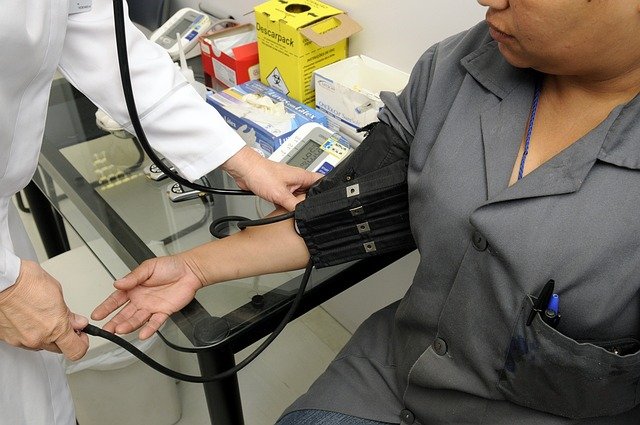Begin a Medical Assistant Career: Training & Certification
Ready to start a medical assistant career? This in-depth guide explains medical assistant training options, clinical and administrative duties, program lengths, certification pathways, and job prospects. Learn how to pick accredited programs, prepare for certification exams, and position yourself for growth in healthcare with practical next steps and tips.

Medical assistants are essential members of healthcare teams, combining patient-facing clinical duties with administrative responsibilities. Because duties vary by setting and state regulations, this role offers flexibility for people who like hands-on care and organizational work. Whether you aim to work in a family practice, specialty clinic, or outpatient center, understanding training options and certification routes will help you enter the field with confidence.
Typical daily responsibilities
A typical shift for a medical assistant blends clinical tasks and office work. On the clinical side, you might take vital signs, prepare patients for exams, collect specimens for laboratory testing, perform point-of-care tests, and assist clinicians during minor procedures. Under appropriate supervision, some MAs administer injections or medications.
Administrative work often includes scheduling appointments, maintaining and updating electronic health records (EHRs), processing referrals, and handling basic medical billing and coding. Because job duties depend on the employer — from physician practices to hospitals and outpatient centers — being adaptable and able to switch between clinical and clerical tasks is a valuable trait.
Paths to education and training
Most employers prefer applicants who have completed formal postsecondary training. Common routes include certificate or diploma programs and associate degrees, available through community colleges, vocational schools, technical institutes, and some universities.
- Certificate or diploma programs: Designed to teach core clinical and administrative skills, these programs usually run 9–12 months and focus on hands-on competencies and office workflows.
- Associate degrees: Typically 18–24 months, an associate degree mixes occupation-specific training with general education courses. This option can broaden academic preparation and may support future education steps.
- On-the-job training: Some employers hire candidates with no formal credential and train them internally, but many prefer graduates of accredited programs because those programs include structured instruction and supervised clinical practice.
Most reputable programs incorporate a practicum or externship that places students in clinical settings to gain supervised, real-world experience and build professional contacts.
| Program Type | Duration | Credential Earned |
|---|---|---|
| Certificate/Diploma | 9–12 months | Certificate or Diploma |
| Associate Degree | 18–24 months | Associate of Science or Associate of Applied Science |
| On-the-job Training | Varies (several months) | No formal credential |
Prices, rates, or cost estimates mentioned are based on current information and may change over time. Independent research is advised before making financial decisions.
Core skills employers seek
Successful medical assistants combine technical competence with strong interpersonal skills. Key abilities include:
- Clinical proficiency: Accurate vital sign measurement, specimen collection, point-of-care testing, administering injections under supervision, and assisting with examinations and minor procedures.
- Administrative talent: Comfortable using EHRs, scheduling systems, and basic billing and coding software.
- Communication: Clear, compassionate interaction with patients and efficient coordination with other healthcare staff.
- Attention to detail: Precise charting, following provider orders, and complying with safety and infection-control standards.
- Flexibility and continuous learning: Adapting to new technologies, changing procedures, and evolving regulations.
- Empathy: Calm, reassuring support for patients who may be anxious or unwell.
Certification and credentials
Certification expectations vary by state and employer, but national certifications can strengthen job applications. Popular credentials include the Certified Medical Assistant (CMA) from the American Association of Medical Assistants (AAMA) and other recognized certifications. Programs that explicitly prepare students for national exam content, provide practice testing, or offer targeted review sessions can make the certification process smoother and demonstrate competence to potential employers.
Job outlook and advancement
Employment prospects for medical assistants are favorable — demand is expected to grow faster than average due to population aging, expanded healthcare access, and greater use of outpatient and preventive services. Medical assistants work in diverse environments including primary care, specialty clinics (dermatology, pediatrics, etc.), hospitals, outpatient surgery centers, and alternative practices like chiropractic offices.
With experience and additional training, medical assistants can move into supervisory or administrative positions such as lead MA or office manager. Some choose to pursue further education to become licensed nurses or to enter other allied health professions.
How to pick the right program
When researching schools and programs, evaluate these factors:
- Accreditation: Prefer programs accredited by bodies like the Commission on Accreditation of Allied Health Education Programs (CAAHEP) or the Accrediting Bureau of Health Education Schools (ABHES).
- Breadth of curriculum: Look for programs that balance hands-on clinical procedures with the administrative systems used in modern practices.
- Externship opportunities: Real-world clinical placements help you apply skills and expand your professional network.
- Certification preparation: Programs that prepare students for national certification exams add clear value.
- Career support: Job placement services, resume workshops, and interview coaching can ease the transition into employment.
- Cost and aid: Compare tuition, fees, and available financial aid such as scholarships, grants, or payment plans before committing.
Final thoughts
A career as a medical assistant can be rewarding for people who enjoy direct patient care, variety in daily tasks, and clear opportunities for growth. Choosing an accredited program with supervised clinical experience and certification preparation will give you practical skills and credibility with employers. Stay curious, compassionate, and committed to lifelong learning to remain competitive as healthcare continues to change.
This article is for informational purposes only and should not be considered medical advice. Please consult a qualified healthcare professional for personalized guidance and treatment.





